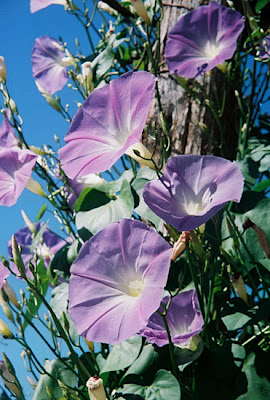I had planned to try some b&w with my Argus, but the Tmax I ordered from Adorama took longer to get to me than anticipated. So, I threw in another roll of Kodak Gold 200 with the intent mostly of trying out the unusual close focusing capability of the A2F.




The photo of the red flowers was made by setting the focus to the minimum 15 inches and carefully measuring the distance to the flower from the front of the camera. Usually, focal distance is measured from the film plane, but Argus apparently decided that users would find a measurement from the camera front easier to deal with, and that was the instruction provided in the camera's manual.
The self-portrait was made at arm's length, again with the help of a tape measure with one end at the tip of my chin and the other at the camera front. The focal distance was 18 inches.
The last picture was a lucky guess with the the focal distance set to the minimum 15 inches. Several other guestimate shots didn't work. There just isn't enough depth of field when shooting that close to accommodate sloppy technique.
I've put what I've learned
about the A2F so far into a page at my vintage cameras web site.




















































